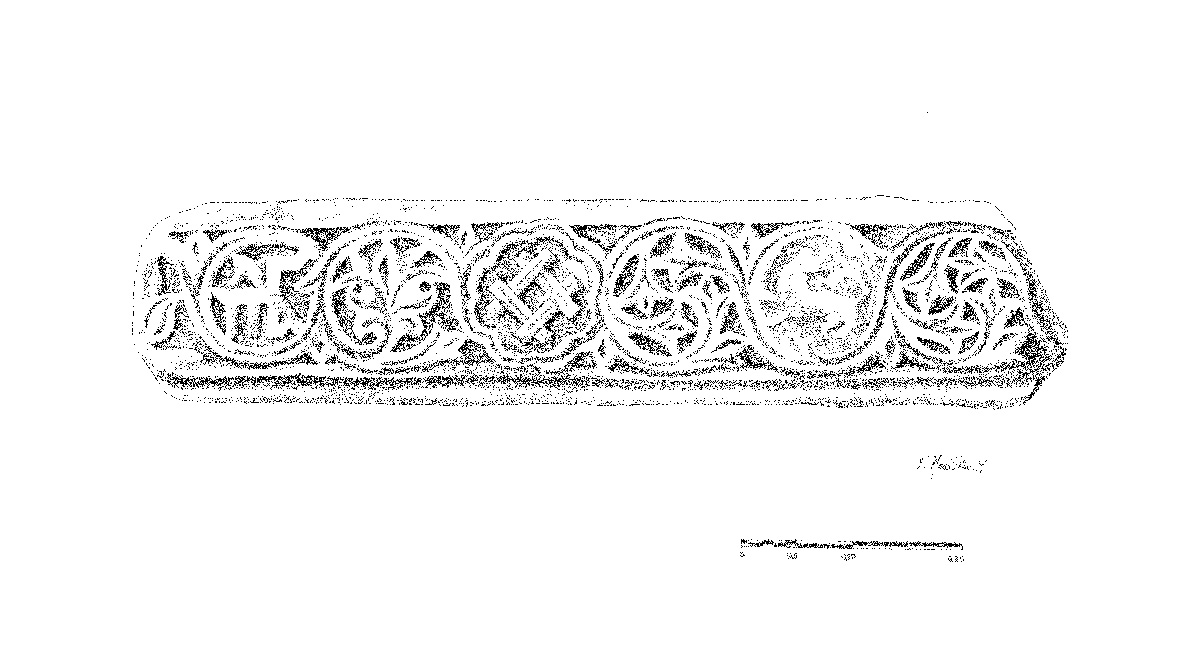
Part of architrave with the monogram of Palaelogans
Part of an arhitrave, belonging probably to a templon of an unknown church of Thessaloniki. The rich decoration is developed in both sides. The frontage of the architrave’s main side has a relief vegetation decoration, consisting of double shot of vines that entwine, shaping into a row of continuous circles, from left to right, that fill up with a vegetation theme inside imperfect circles, square monogram of the Palaeologans, consisting of the Greek letters Π, Α, Λ, Γ (P, A, L, G) and an upright palmette-like acanthus. Following, there is an eight-leaf rosette which encloses a square that is identified with the coat of arms of the Palaeologans. The next circles enclose swirled spiral of four trefoils, a wild animal in motion, while in the last circle the theme of a spiral is repeated. The spaces between the continuous circles, in the long surface of the architrave, are filled with an upright lotus being alternately presented above or below. The decoration was probably crowned with a listel or a band that is not preserved, as in this part the surface of the marble has been exfoliated. The lower part of the architrave is decorated with two large heart-shaped frames that enclose oblique palmette-acanthus. The heart-shaped frames are shaped from spiral shots that generate from the acanthus leaves that end up to two trefoils in the type of fleur de lis. In the centre of the axis the fleur de lis are placed the one besides the other in such a way that a Maltese cross is created. The triangonal spaces above and below the cross are filled with a shaped lotus. In its left ending an undecorated frame with an incised cross retains the surface on which the architrave connects with the capital abacus.
Code
AG 730
Type
Part of architrave
Chronology
14th c.
Dimensions
Lenght 84 cm., height 18 cm., width 35 cm.
Material of Construction
Marble
Origin
Thessaloniki



